Among Friends 7 April 2021, Great Horned Owls
by Walt Anderson
The Great Horned Owl, justifiably called the “Tiger of the Night,” is found throughout North America and more than half of South America. In Arizona, it occurs from as low as 27’ near Yuma to 9800’ in the White Mountains, avoiding only the densest of forests and the most open of habitats. Buenos Aires NWR has a heathy population of these dramatic birds.
Most members of the genus Bubo occur in the Old World, especially Africa, where they are called eagle-owls. Its closest North American relative is the Snowy Owl; both are apparently derived from a common ancestor that split in northern Asia, then spread across the Bering connection into North America. There is an interesting parallel in that the Polar Bear is the northern kin of the Brown or Grizzly Bear. A warming climate may be particularly damaging to both of the polar species.
Let’s take a closer look at this formidable avian predator of the night.

With binocular vision and a rather catlike face, the Great Horned Owl is the object of many myths, even the ability to summon summer heat and rains for the Hopi peach crop. Their intense faces often suggest wisdom and power. The “wise old owl” may or may not be wise, but they can get old, as one in the wild reached at least 29 years, and in captivity, they have reached 50 years!
●●●
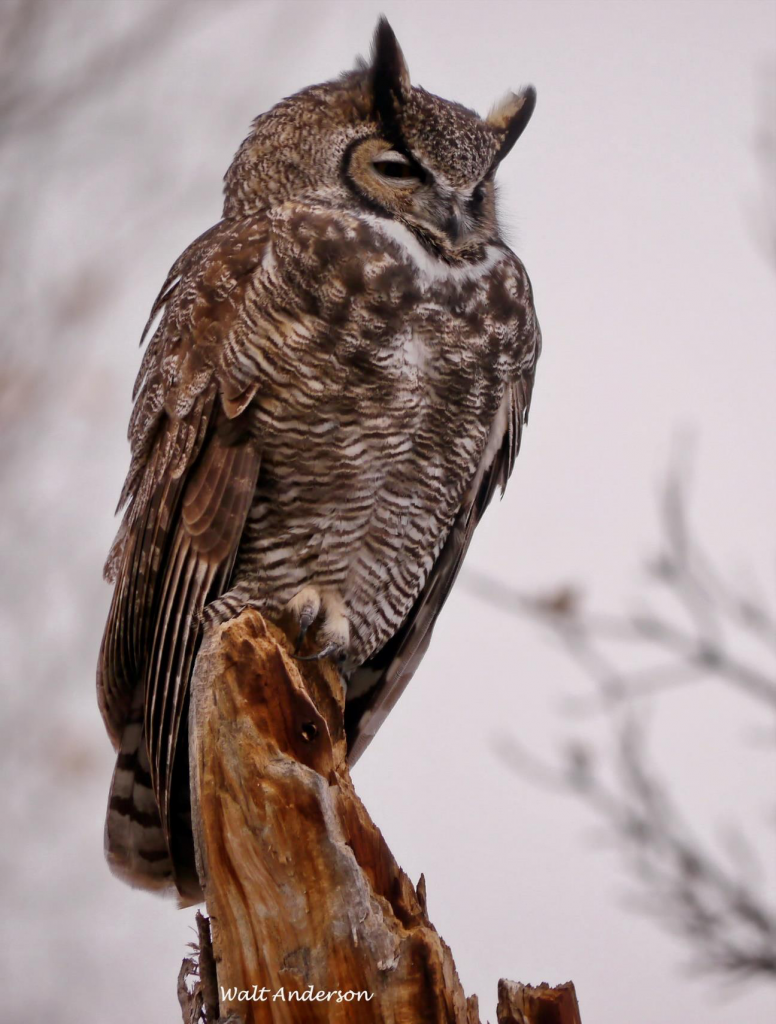
Mottled plumage can be concealing camouflage if they are next to tree bark or on a lava cliff, but this owl was right out in the open in a riparian area. It may be hunting, as owls start getting active as the shadows lengthen at end of day and the rabbits venture forth. In fact, rabbits and hares (e.g., the jackrabbit and snowshoe hare) are often targets for this feathered tiger. Hare today, gone tomorrow.
●●●

Owls don’t build a nest from scratch. Most often they take over a nest of a Redtail, Cooper’s Hawk, Common Raven, or even a heron. The male bounces on the old nest to flatten it a bit, and that’s about it. Since they begin nesting early, they often take over a raptor nest before the raptor is ready to refurbish it, forcing the hawks to relocate. Here an owl is nesting in a former Redtail nest in a saguaro.
●●●
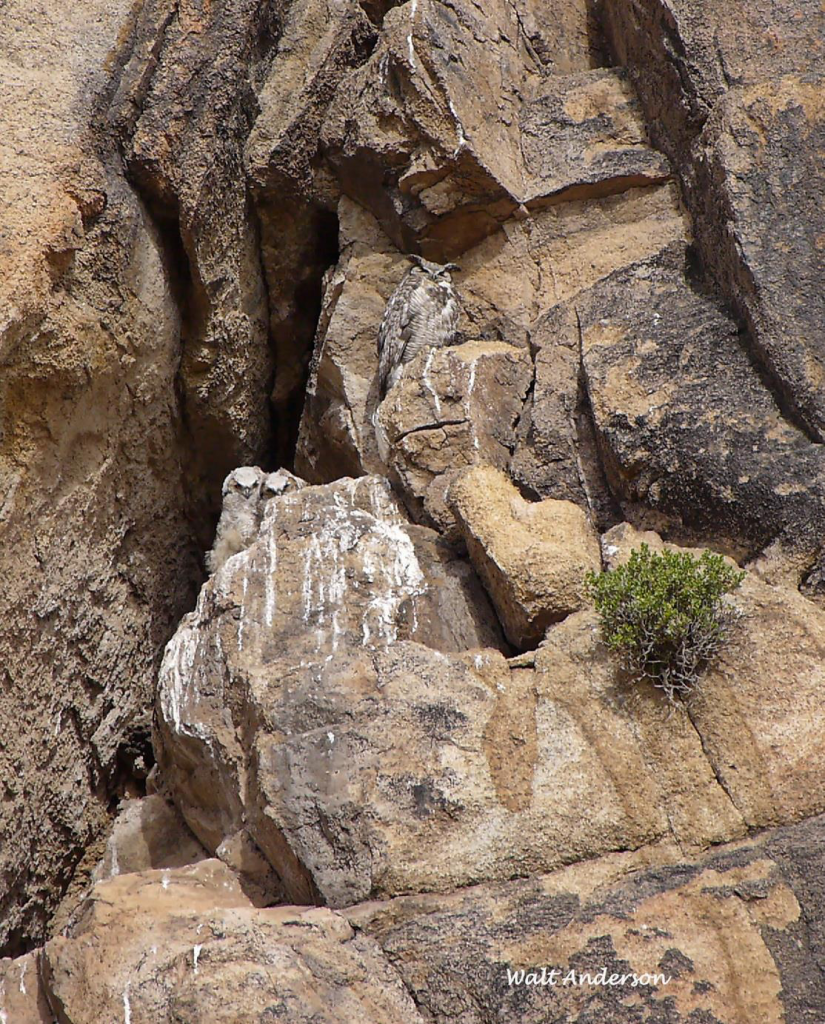
The caves and crevices in the Granite Dells are often chosen as protected nest sites. One parent, likely the female, watches over the nestlings, while the male hunts and brings back prey for the family. The female then may tear up the rabbit or fat woodrat into chick fillet to feed to the hungry young-uns.
●●●

The flight feathers of owlets develop most quickly, and the young often leave the nest while still downy everywhere else. They are still not strong flyers, and the parents may continue to bring them food for up to five months after they have left the nest. They are most vulnerable at this time, with heavy mortality during the first year. It’s not a given that each bird will become a wise old owl.
●●●
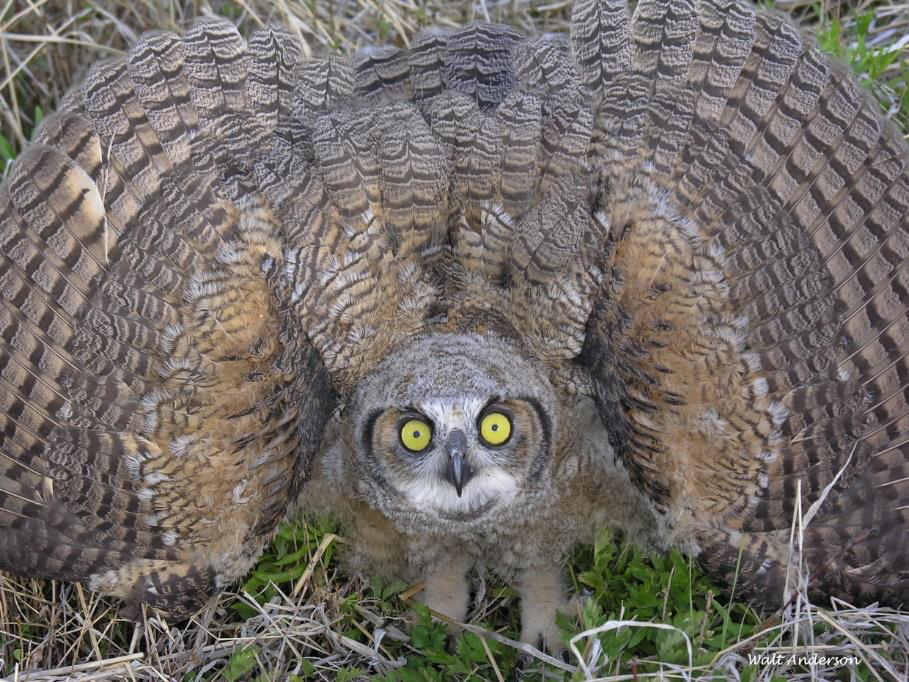
Walking a path in Watson Woods in Prescott, I encountered one of the early fledglings who put on an impressive defensive display. I took the hint and a photo, then let it be.
●●●
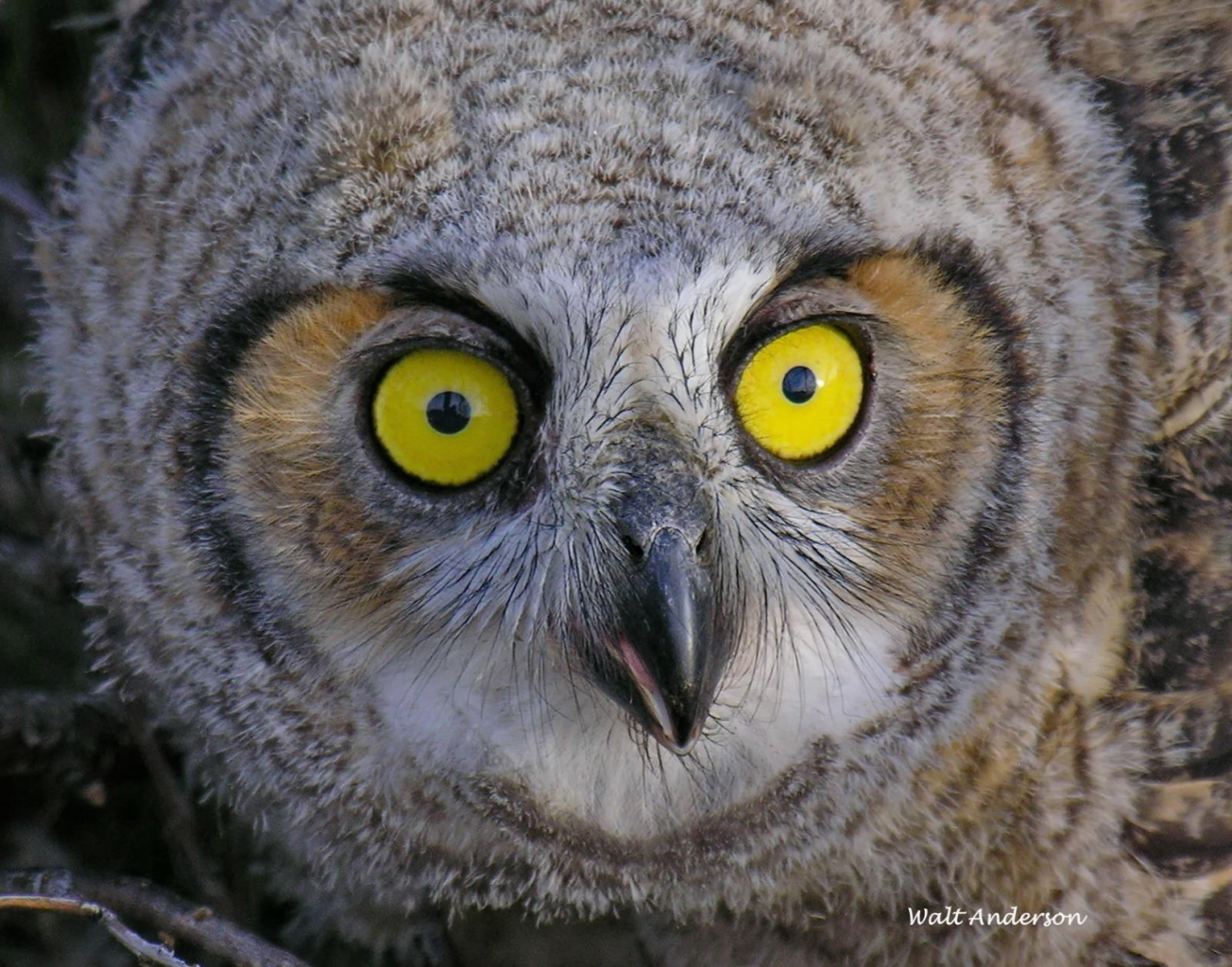
Notice how the young owl is still very downy except for its wings, which mature first. Owls have very large eyes relative to body size, but they are fixed in bony sockets and can’t shift from side to side like our eyes allow. To compensate, they can turn their heads through 270 degrees. They also bob their heads if they want to better determine distance visually. Their ears are asymmetrical under those facial disks, and that enables depth perception through sound. The eyes are packed with rods and able to see well in relative darkness; scientists estimate that their vision is about 10 times more powerful than ours. That is, they have built in binoculars. While the beak is sharp, it is not much of a defensive weapon; watch out for the talons instead. But then, why are you picking up an owl? If you find a young one out in the field like this, leave it alone; the parents are taking care of it just fine.
●●●
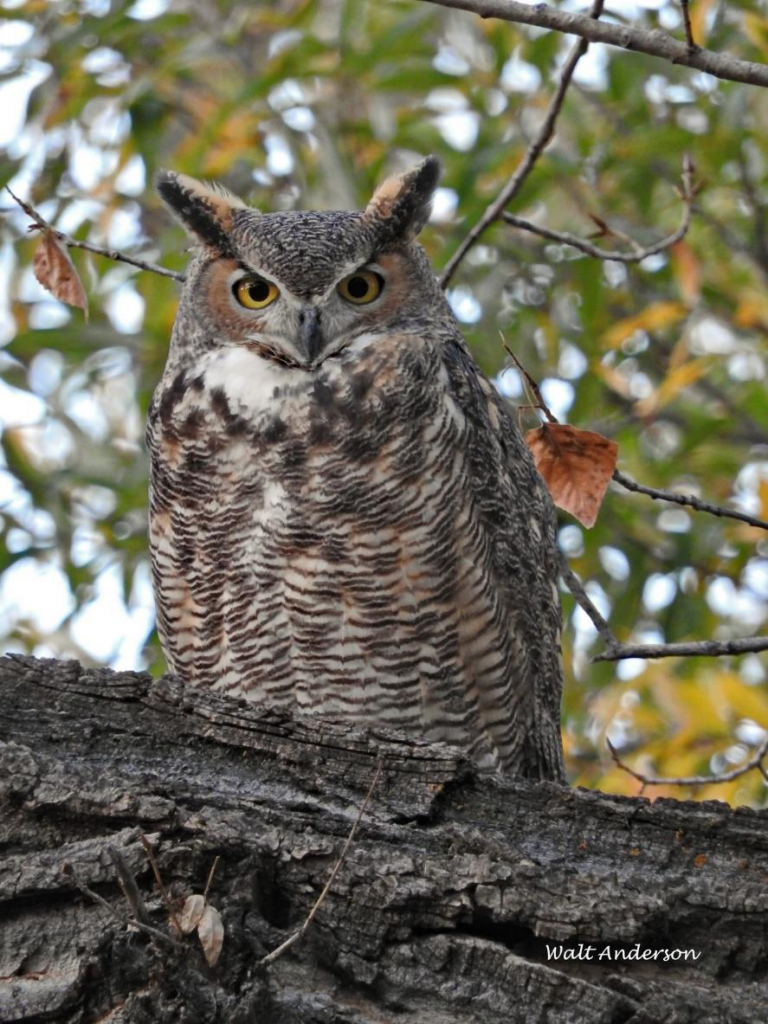
The ”horns” are just feathers, not ears, which are hidden in the facial disks. They are plumicorns (add that to your vocabulary). Their function is not well understood, but it is believed that they have some signaling function within the pair. Both sexes can join in a duet, though the larger female has a smaller syrinx and thus a slightly higher voice (who knew?). When a male hoots, it leans forward, raises its tail, and fluffs out its white throat patch, a visual signal in the darkness. If you give a hoot, check out the tremendous variety of owl sounds as recorded by the International Owl Center: https://www.internationalowlcenter.org/ghovocalizations.html.
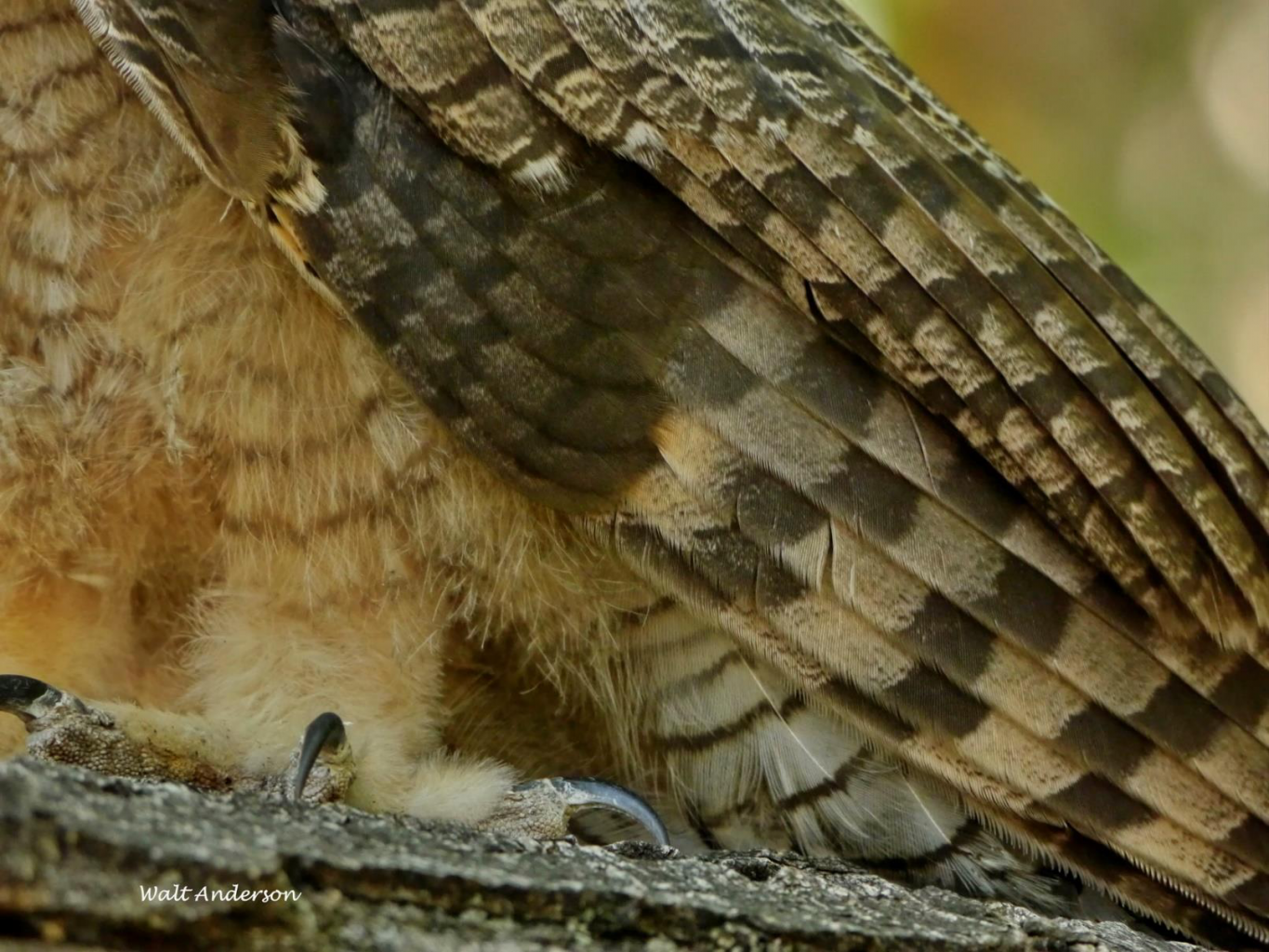
Owls are such effective predators because of their keen eyesight but also because they fly silently, thanks to fringes on the soft flight feathers. Look closely. Also note the powerful talons, which can apply a crushing power of 300 pounds per square inch. That’s why owl rehabilitators wear heavy gloves! Their outer toes can shift backward, giving them two in front and two behind (zygodactyl), perfect for grasping and squeezing prey. Their gripping power can approach that of a much larger Golden Eagle. As a killing machine, they are highly talonted.
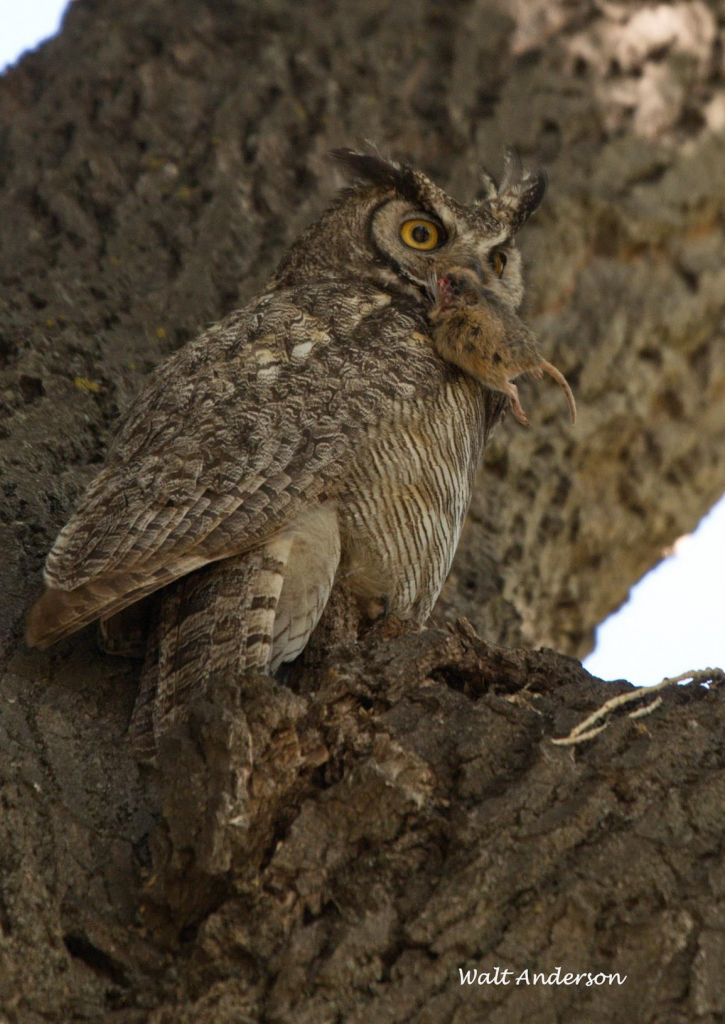
Gophers (an unlucky one seen here), woodrats, mice, and rabbits are among the common owl prey items, but owls will eat almost anything they can kill, from insects to other owls to cats and skunks and even something as large as a porcupine or turkey! They can keep rats and gopher populations under control, which is a plus from a human viewpoint, though if your tabby is nabbed, you may not be so happy. Indigestible material like fur, feathers, bones, and insect exoskeletons are compressed and regurgitated later as pellets, which provide us curious folk with forensic data on owl diets.
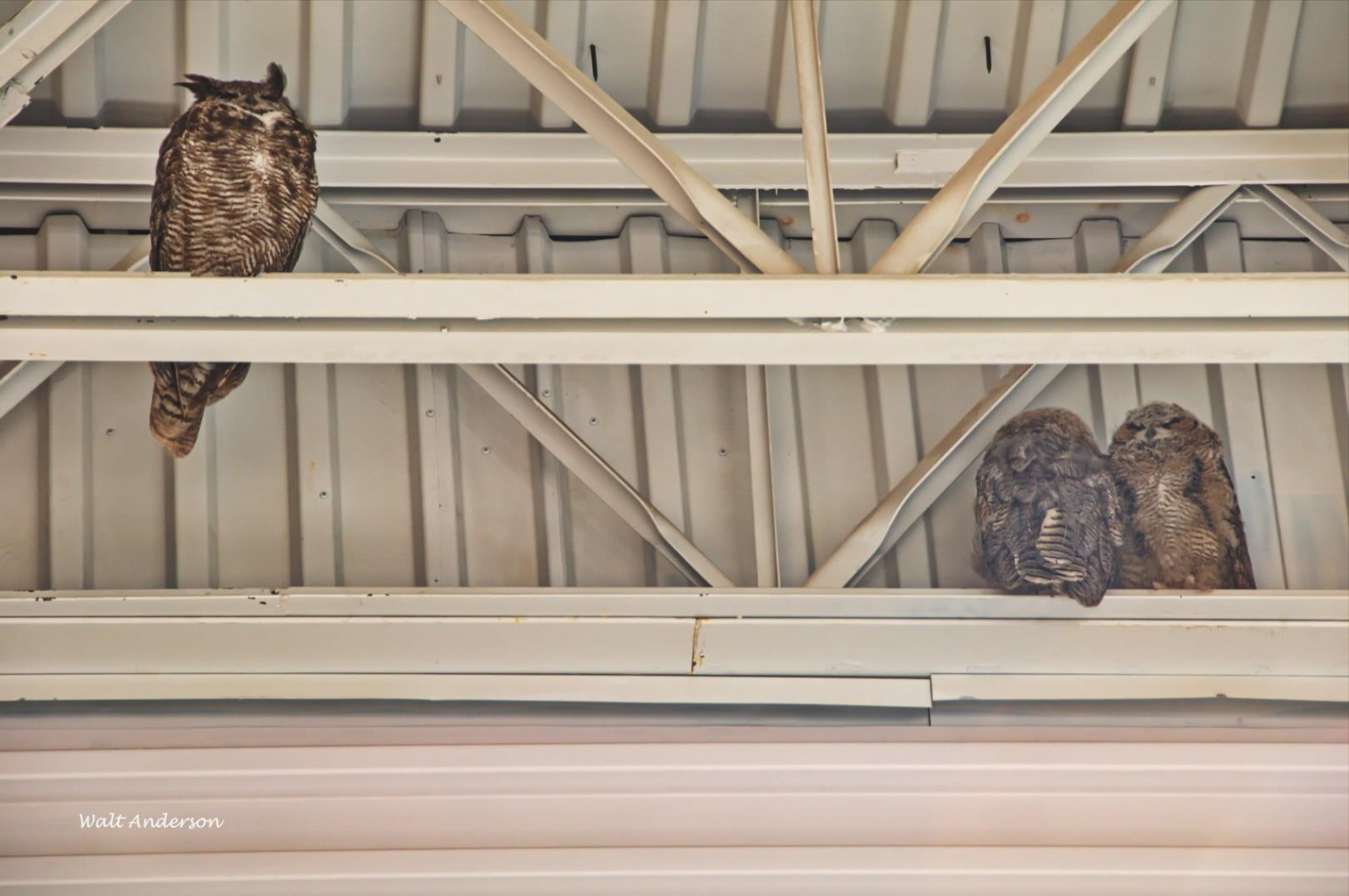
Owls follow the prey, which is why we sometimes find them in the garden departments of Lowe’s and Home Depot! In appreciation of the owls’ services keeping mice and rats under control, these big stores may go beyond mere toleration, and when birders find out, the store’s plant sales may increase too. Watchable wildlife may show up in the strangest places, even on Prescott’s historic courthouse at times.

All those noisy shoppers down in the plant department can ruin a good day’s sleep. I was lucky enough to capture an owl in full yawn. Of course, I had to yawn in return, but that’s a contagiousness I can live with. I was not bored.
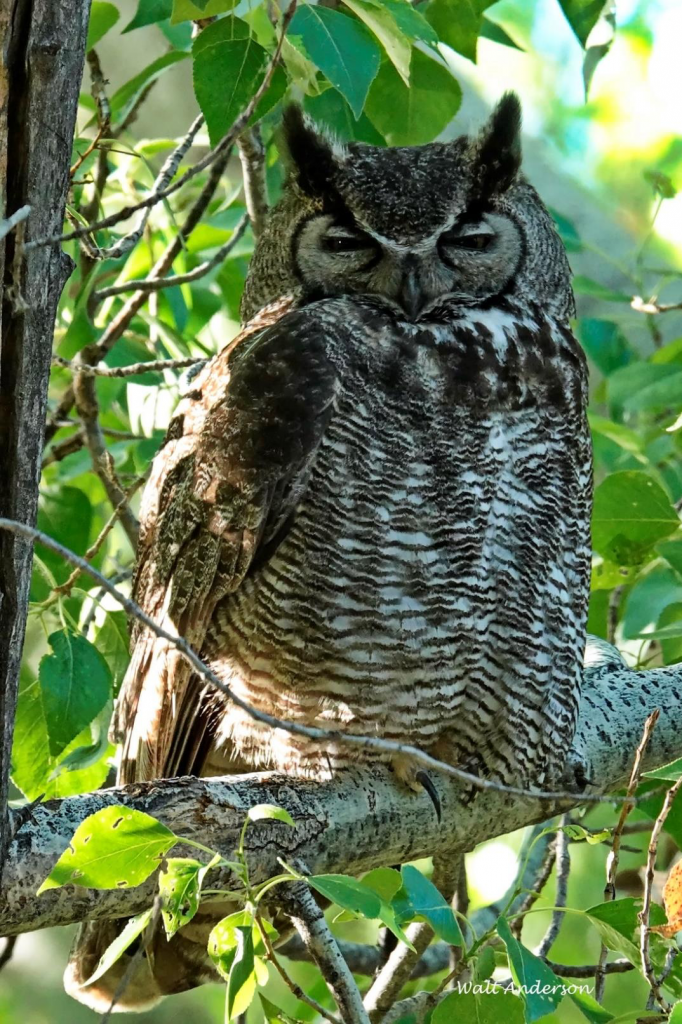
Though owls may be harassed by crows, kingbirds, falcons, and others, they have few natural enemies other than fellow owls except when young and out of the nest but not yet competent at flying. Humans are their main source of unnatural mortality—hit by cars, shot illegally, electrocuted on power poles. Owls that scavenge rats may die of accumulated toxic rodenticides. Loss of habitat is a concern, though Great Horned Owls, as we have seen, are much more adaptable than most wildlife species. Every day I see an owl is a good day, in my opinion. They are out there, so be watchful, and you may be rewarded.

Walt, you have outdone yourself, both the prose and the photos of the Great Horned owls. Thank you
Holly, up north in northern Oregon forests for the summer, with Great Horned in our Doug firs out back